Femia > Health Library > Getting Pregnant > Trying to conceive > Can you get pregnant when you’re not ovulating?
Can you get pregnant when you’re not ovulating?
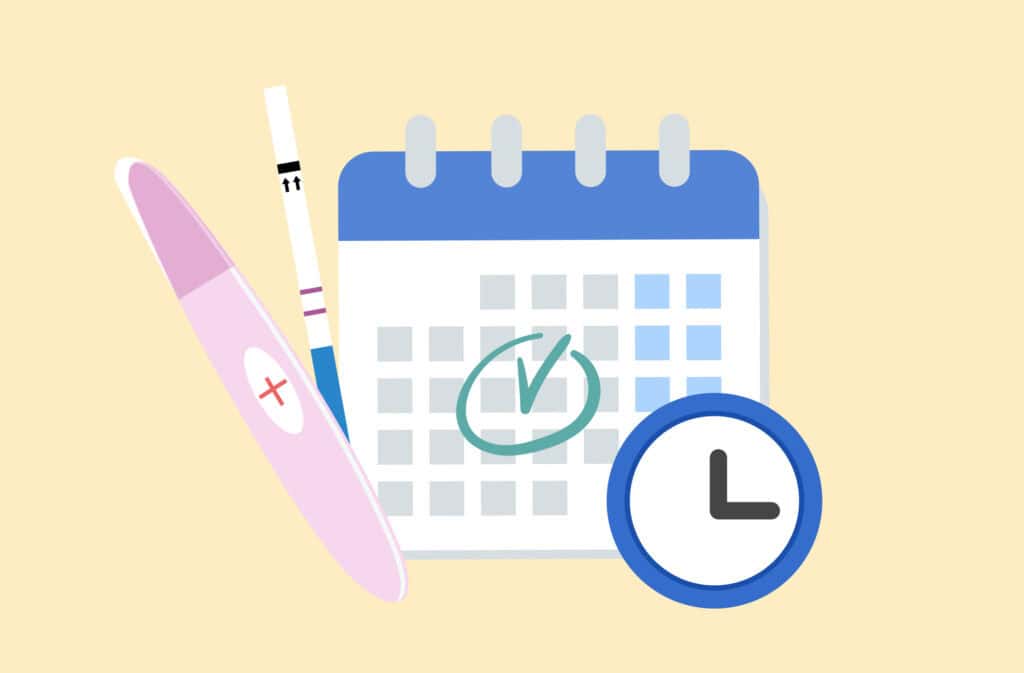
- Updated Feb 10, 2025
- Published
CRAFTED BY HUMAN
Crafted by human At Femia, we provide accurate and up-to-date information at every stage of your journey, from trying to conceive, pregnancy and postnatal support. All content is created by a real person based on in-depth research and own professional experience. Femia ensures that you will receive expert advice, strict accuracy and a personalized approach from our authors/medical experts. Learn more about our editorial policy.
FACT CHECKED
Fact checked At Femia Health, we maintain the highest standards of editorial excellence in delivering content focused on helping you conceive, guiding you through pregnancy, and supporting you postpartum. Explore our content review principles to learn how we ensure the accuracy and quality of our health and lifestyle tips for every stage of your journey.
Can you get pregnant when you’re not ovulating? The short answer is possibly; the long answer involves a deeper look into the biological process that is ovulation as well as knowledge of what and when the fertile window is and an understanding of your own unique menstrual cycle.
Whilst 85% of couples who are having regular unprotected sex will conceive within 12 months many are looking for ways to optimize their chances and speed up the process. But, whether you’re hoping to improve your chances of getting pregnant or are actively trying to avoid it, understanding the science behind how conception happens will help.
What is ovulation: Why is it important for conception?
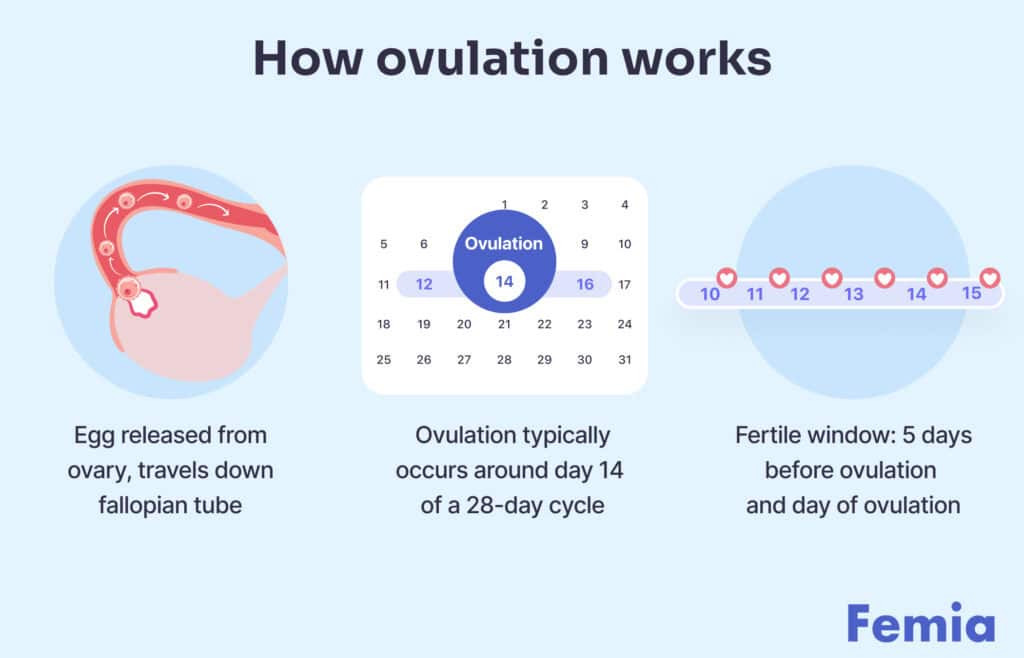
To answer the question, “Can you get pregnant when you’re not ovulating?” it’s important to understand what ovulation is.
Ovulation is a key event in the menstrual cycle, marking the moment when a mature egg is released from an ovary. Here’s a breakdown of how ovulation happens:
Hormonal signals
- The hypothalamus in the brain releases gonadotropin-releasing hormone (GnRH), which signals the pituitary gland to produce follicle-stimulating hormone (FSH).
- FSH stimulates the development of follicles in one ovary, each containing an immature egg.
Dominant follicle selection
- One follicle becomes the dominant follicle and continues to grow, while others recede. This dominant follicle produces increasing amounts of estrogen.
LH surge and egg release
- The rising estrogen levels trigger a surge in luteinizing hormone (LH) from the pituitary gland.
- The LH surge causes the dominant follicle to release its mature egg, marking ovulation.
Egg travel and fertilization window
- The egg travels into the fallopian tube, where it can survive for up to 24 hours and may be fertilized if sperm is present.
- Since sperm can live in the reproductive tract for up to five days, having sperm in the fallopian tube before ovulation increases the likelihood of fertilization.
Ovulation is crucial for conception, as it creates the opportunity for an egg to meet sperm in the fallopian tube, initiating the possibility of fertilization and pregnancy.
Femia offers the most accurate tool for determining ovulation and fertile days
What is the fertile window?
The fertile window is the period in the menstrual cycle when conception is most likely, spanning from five days before ovulation to the day of ovulation. Sperm can survive in the body for up to five days, and the egg remains viable for around 24 hours, creating a six-day timeframe for possible fertilization. The best chances of conceiving occur when sex takes place two to three days before the egg is released. Predicting the exact fertile window can be challenging, even with a regular cycle, so tracking ovulation signs like basal body temperature or using ovulation kits can improve accuracy.
👉Find out more: How to boost fertility: 7 natural ways to increase your chances of getting pregnant
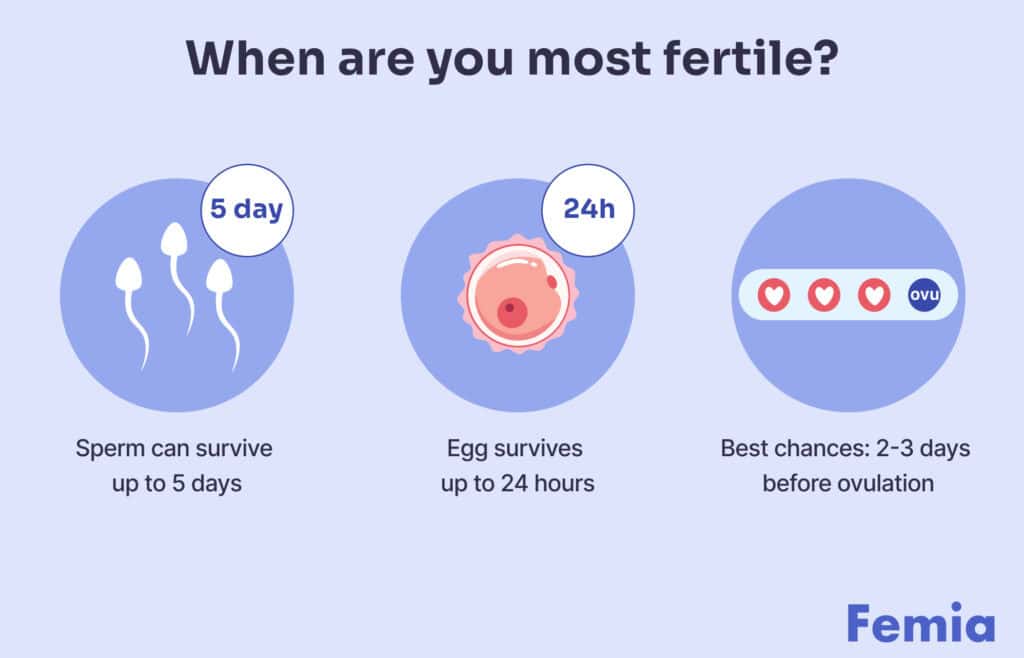
Can you get pregnant outside of the fertile window?
While conception is most likely within the fertile window, some studies suggest that pregnancy can still occur outside this timeframe due to cycle variability and sperm survival. Here’s how timing affects your chances:
Days before and after ovulation
Studies like those by Wilcox and Bull show that ovulation timing varies widely, even in regular cycles. While the fertile window typically spans days 10-17, ovulation can occur earlier or later, making conception possible on unexpected days.
On your period
Pregnancy during menstruation is unlikely, but it’s not impossible. In cases of shorter cycles or early ovulation, sperm from sex during a period could still be viable when ovulation occurs.
Right before your period
Conception is unlikely right before your period since the fertile window typically ends with ovulation. However, irregular cycles may occasionally lead to late ovulation, making pregnancy possible.
Right after period
Having sex immediately after your period can sometimes lead to pregnancy, especially if you ovulate early. Sperm can live in the body for up to five to seven days, potentially leading to conception if ovulation occurs soon after menstruation ends.
Can you get pregnant if you’re not ovulating?
You might be asking yourself, “can I get pregnant if I’m not ovulating?” and the answer is no. It is not possible to get pregnant if you do not ovulate during a cycle, as this means that your ovaries have not released an egg to be fertilized.
Anovulation is the medical term for not ovulating. Not being able to ovulate is the cause of infertility in 30% of cases.
Ovulation can range in severity from month to month. A study by DeVilbiss found that anovulatory cycles, a cycle where no egg is released, are common. However, this kind of infrequent anovulation does not significantly delay you getting pregnant.
Some women, however, can suffer from chronic anovulation. This means that they do not release an egg during the majority of their cycles and consequently will find it much more difficult to get pregnant naturally.
👉Find out more: Enhancing fertility naturally: A guide to fertility supplements and foods for women
@femia.fertility That's a good question! If you want to get pregnant but you don't have ovulation, you may track it incorrectly. Use Femia to track ovulation and visit your OBGYN to see if a dominant follicle is maturing. #ovulation #ANOVULATION #ovulationissues #fertilityjourney #ttcjourney #canigetpregnant #lhtest #ovulationtracker #fertilityapp ♬ original sound - Femia fertility app
What causes anovulation?
Anovulation is usually caused by a hormonal imbalance. There are several hormones that need to work together in order for your ovaries to release a healthy egg. If any of these are out of balance, it can stop you ovulating.
Several different medical conditions as well as lifestyle factors can affect the balance of these hormones.
The International Federation of Gynecology and Obstetrics (FIGO) recently grouped the causes of anovulation into four different categories.
Type 1: Hypothalamus
This is when the hypothalamus does not produce enough GnRH. A number of conditions and lifestyle factors can cause this such as low body weight, excessive exercise, or high levels of stress.
Type 2: Pituitary gland
This is when the pituitary gland does not secrete enough LH and FSH. This is most commonly caused by pituitary failure due to head injuries, autoimmune or inflammatory disorders, or benign pituitary tumors.
Type 3: Ovarian
Even if your hormone levels are ok, the ovaries can fail to release an egg due to several reasons. Premature menopause, previous radiotherapy or chemotherapy damaging the ovaries, autoimmune conditions, or genetic conditions like Turners syndrome can all cause ovarian failure.
Type 4: Polycystic ovary syndrome (PCOS)
This is the most common cause of anovulation, and accounts for 70% of cases.
In PCOS, the ovaries produce too much androgen. Androgens are a group of sex hormones and include the hormone testosterone. Women normally have low levels of testosterone, but those who suffer from PCOS can have much higher levels than normal. High testosterone levels can cause the ovaries to produce small, immature follicles that don’t respond to normal levels of FSH. This means that a dominant follicle is less likely to develop, and without a dominant follicle, you cannot ovulate.
It is possible to suffer from PCOS and have no symptoms. However, many women will experience one or more of the following:
- Difficulty getting pregnant
- Excessive hair growth on the body (hirsutism)
- Irregular menstrual cycles that are typically longer than normal
- Weight gain
- Acne or oily skin
- Thinning hair
Ultrasound imaging of women with PCOS will show several small, underdeveloped follicles in the ovaries. But, despite the name, they are not actually cysts.
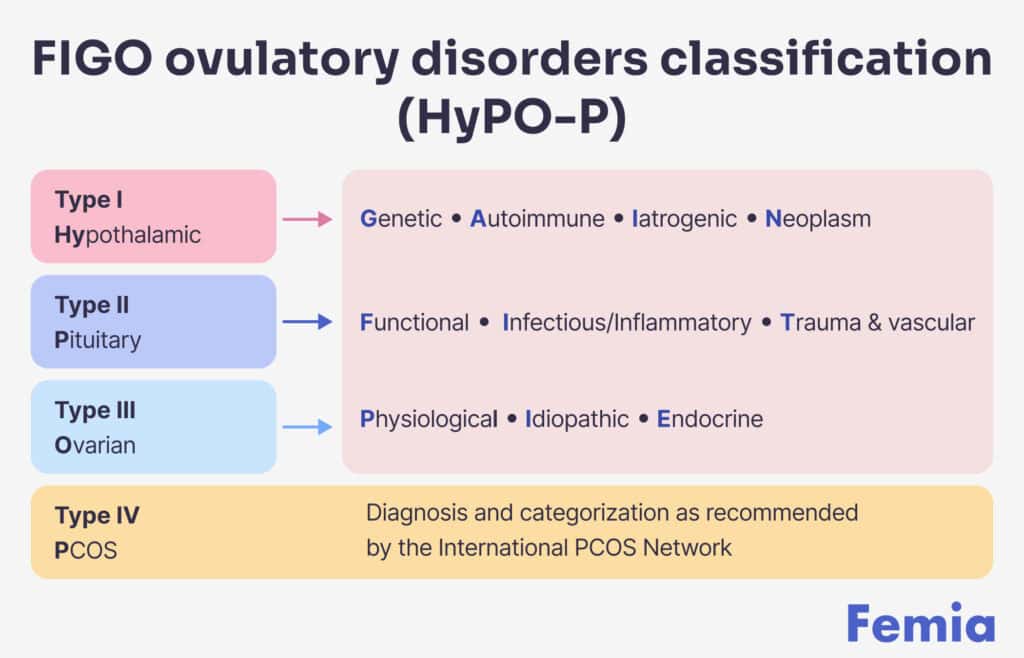
How do you know if you're not ovulating?
It can be difficult to know for certain whether or not you’re ovulating; however, if you suffer from any of the following symptoms, you should discuss them with your healthcare provider:
- Irregular menstrual cycles, either very long or very short
- Amenorrhea (No periods)
- Very heavy or very light periods
- Inability to get pregnant
Femia offers the most accurate tool for determining ovulation and fertile days
How do you treat anovulation?
Firstly, your healthcare provider will need to run some tests to confirm that you’re not ovulating and find out why. The treatment available depends on what is causing the anovulation. For many, the main treatment includes fertility drugs. These work by replacing the natural hormone that is affected, such as FSH or LH, to stimulate ovulation.
Does not having a period mean you’re not ovulating?
In certain circumstances, some women may not have a period (amenorrhea) or may have irregular periods but still be ovulating and, therefore, still get pregnant. Without consulting your healthcare provider and undergoing the necessary tests, you cannot know for certain whether or not you can get pregnant.
Any concerns about your menstrual cycle, including irregular menstruation or a new change in your menstrual cycle, should be discussed with your healthcare provider.
👉Find out more: Can you get pregnant without a period
@femia.fertility Part 2: Mistakes that block you from getting pregnant! Check out Part 1 in the profile. #ttccommunity #ttc #fertilityjourney #ftm #pregnancy #pregnancymistakes #pregnancytips #ovulation #ugc ♬ original sound - Femia fertility app
Questions from the Femia community
Can I get pregnant if I have irregular cycles?
Yes, it is possible to get pregnant with irregular cycles, though predicting ovulation can be challenging. Tracking ovulation signs or using ovulation kits can help improve timing for conception.
How long can sperm survive outside the fertile window?
Sperm can survive in the female body for up to five days, and in rare cases, up to seven days. This means conception can occasionally occur if sex happens a few days before ovulation, even outside the typical fertile window.
What’s the difference between ovulation and the fertile window?
Ovulation is the release of a mature egg from the ovary, typically occurring once per cycle. The fertile window is the six-day period around ovulation when conception is most likely, as sperm can survive several days and the egg remains viable for about 24 hours after release.
Does age impact ovulation regularity?
Yes, age can impact ovulation regularity. As women age, cycles may become more irregular, especially approaching menopause, which can affect the timing of the fertile window and ovulation.
The bottom line
In order to have a shot at getting pregnant, two things need to happen. Firstly, your ovaries need to release a healthy egg into your womb; secondly, live sperm needs to be waiting in the fallopian tube as the egg descends through it.
The fertile window is the period of time when unprotected sex can lead to pregnancy. Whilst the fertile window is six days long, your chances of conceiving are best if you have sex two to three days before ovulation. Although it can be difficult to accurately predict when you will ovulate, there are methods that can help to narrow down your fertile window.
Anovulation is when you don’t release an egg during the menstrual cycle and therefore can’t get pregnant. It is usually caused by a hormonal imbalance and symptoms include not having a period, irregular periods, or periods that are very heavy or very light. While occasional anovulation is common, it’s a good idea to consult with your healthcare provider if you are still unable to get pregnant after more than a year of trying.
References
- Bouchard, Thomas P., et al. ‘Achieving Pregnancy Using Primary Care Interventions to Identify the Fertile Window’. Frontiers in Medicine, vol. 4, Jan. 2018, p. 250. PubMed Central, https://doi.org/10.3389/fmed.2017.00250.
- Bull, Jonathan R., et al. ‘Real-World Menstrual Cycle Characteristics of More than 600,000 Menstrual Cycles’. Npj Digital Medicine, vol. 2, no. 1, Aug. 2019, pp. 1–8. www.nature.com, https://doi.org/10.1038/s41746-019-0152-7.
- ‘Can I Get Pregnant Just after My Period Has Finished?’ Nhs.Uk, 27 June 2018, https://www.nhs.uk/common-health-questions/pregnancy/can-i-get-pregnant-just-after-my-period-has-finished/.
- DeVilbiss, Elizabeth A., et al. ‘Sporadic Anovulation Is Not an Important Determinant of Becoming Pregnant and Time to Pregnancy among Eumenorrheic Women: A Simulation Study’. Paediatric and Perinatal Epidemiology, vol. 35, no. 1, Jan. 2021, pp. 143–52. PubMed Central, https://doi.org/10.1111/ppe.12692.
- ‘Female Infertility-Female Infertility – Symptoms & Causes’. Mayo Clinic, https://www.mayoclinic.org/diseases-conditions/female-infertility/symptoms-causes/syc-20354308. Accessed 13 May 2024.
- Hamilton-Fairley, Diana, and Alison Taylor. ‘Anovulation’. BMJ : British Medical Journal, vol. 327, no. 7414, Sept. 2003, pp. 546–49. PubMed Central, https://www.ncbi.nlm.nih.gov/pmc/articles/PMC192851/.
- Holesh, Julie E., et al. ‘Physiology, Ovulation’. StatPearls, StatPearls Publishing, 2024. PubMed, http://www.ncbi.nlm.nih.gov/books/NBK441996/.
- Munro, Malcolm G., et al. ‘The FIGO Ovulatory Disorders Classification System’. International Journal of Gynecology & Obstetrics, vol. 159, no. 1, Oct. 2022, pp. 1–20. DOI.org (Crossref), https://doi.org/10.1002/ijgo.14331.
- Pregnancy – Identifying Fertile Days: MedlinePlus Medical Encyclopedia. https://medlineplus.gov/ency/article/007015.htm. Accessed 13 May 2024.
- ‘Signs You’re Ovulating (besides Taking a Test)’. Mayo Clinic, https://www.mayoclinic.org/healthy-lifestyle/getting-pregnant/expert-answers/ovulation-signs/faq-20058000. Accessed 13 May 2024.
- Wilcox, Allen J., et al. ‘The Timing of the “Fertile Window” in the Menstrual Cycle: Day Specific Estimates from a Prospective Study’. BMJ, vol. 321, no. 7271, Nov. 2000, pp. 1259–62. www.bmj.com, https://doi.org/10.1136/bmj.321.7271.1259.
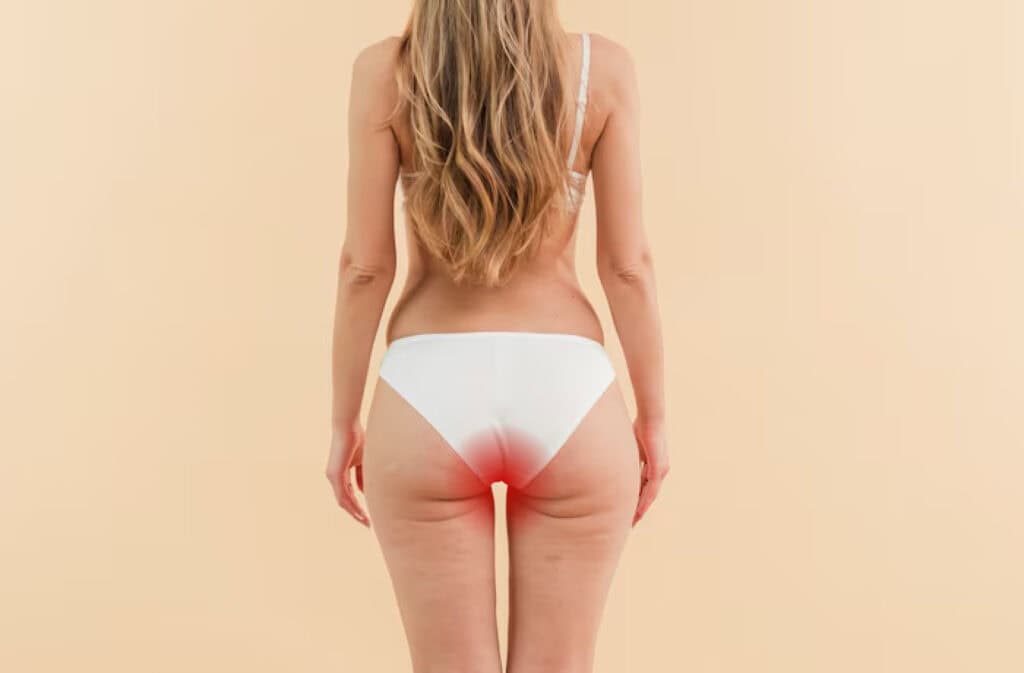
Know how to identify signs of postpartum hemorrhoids, underlying causes, and different treatment options available for your healing journey after childbirth.
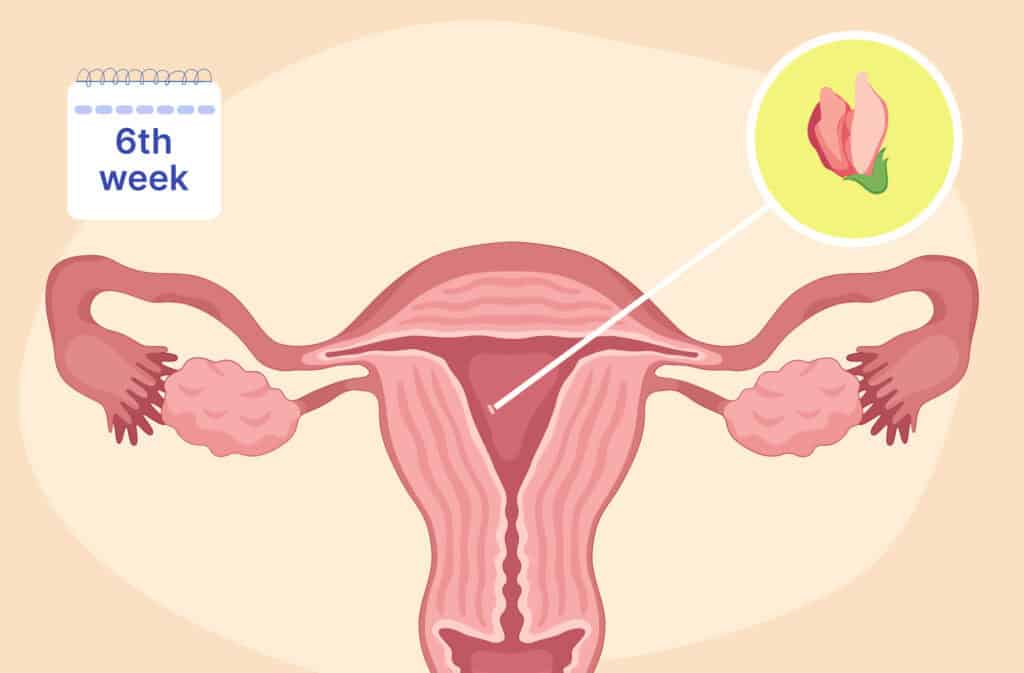
At 6 weeks pregnant, your baby is rapidly growing. Learn about week 6 symptoms, fetal development, ultrasound insights, and key tips for a healthy pregnancy.
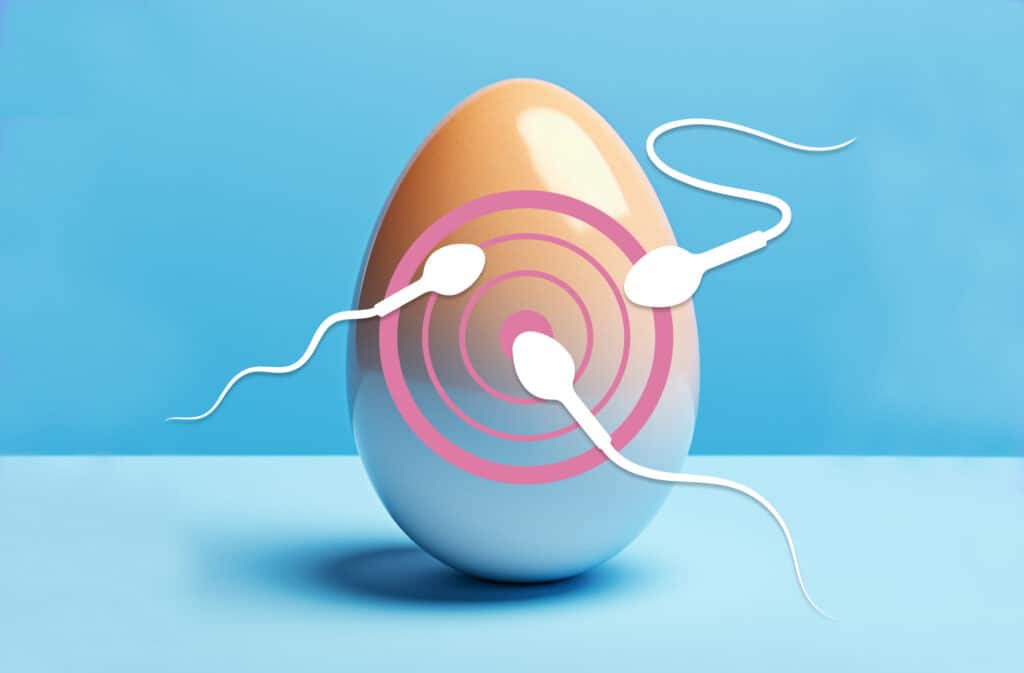
Discover how to improve egg quality with 9 expert tips. Learn signs of good egg quality and strategies to increase fertility, even after 35. Femia’s guide to optimal reproductive health.

